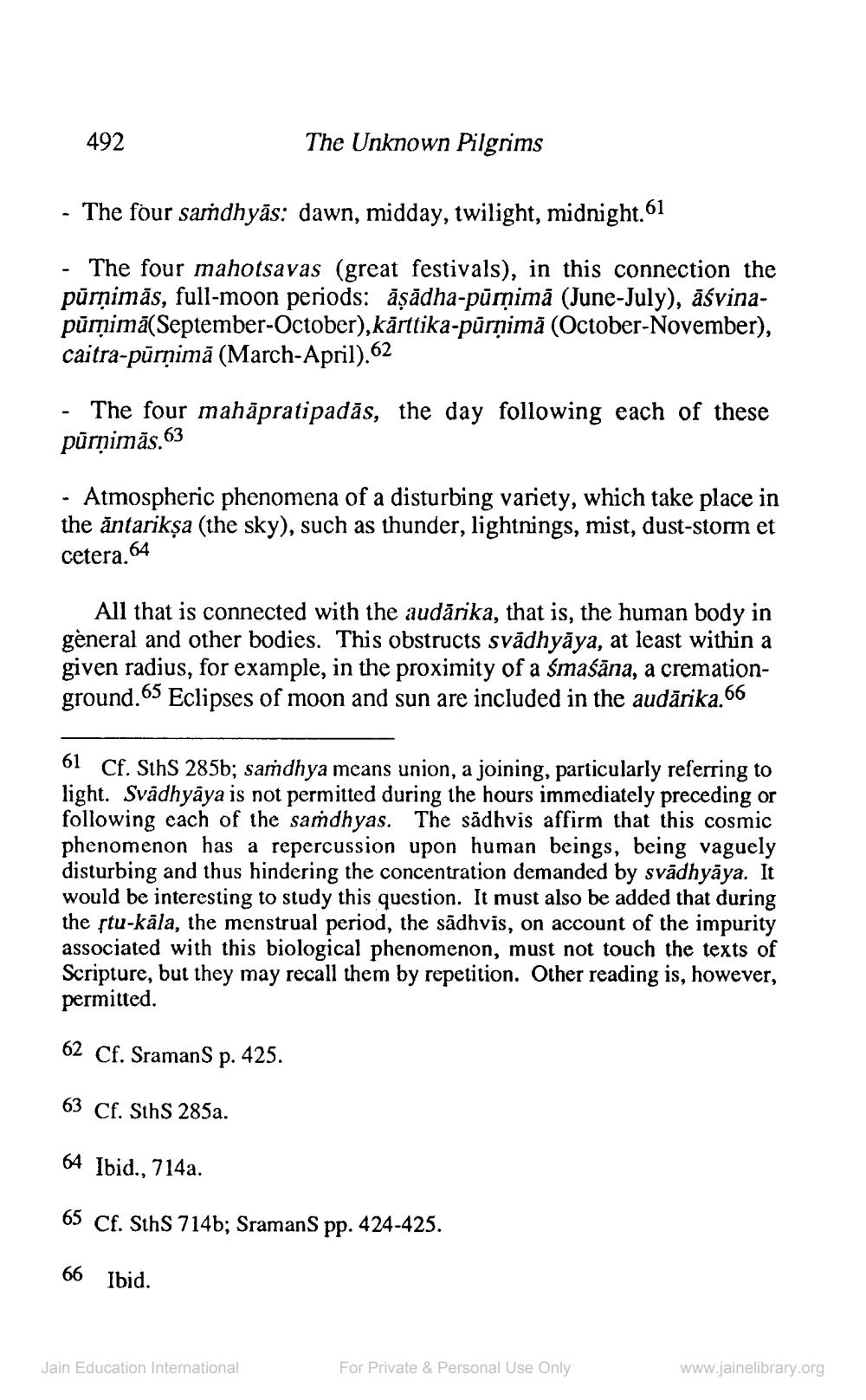________________
492
The Unknown Pilgrims
- The four saṁdhyās: dawn, midday, twilight, midnight.61
- The four mahotsavas (great festivals), in this connection the pūrņimās, full-moon periods: āṣādha-pūrņima (June-July), āśvinapārņimā(September-October),kārttika-pārņimă (October-November), caitra-pūrņimā (March-April).62
- The four mahāpratipadās, the day following each of these pārņimãs. 63
• Atmospheric phenomena of a disturbing variety, which take place in the antariksa (the sky), such as thunder, lightnings, mist, dust-storm et cetera. 64
All that is connected with the audārika, that is, the human body in general and other bodies. This obstructs svādhyāya, at least within a given radius, for example, in the proximity of a smaśāna, a cremationground.65 Eclipses of moon and sun are included in the audārika.66
61 Cf. Sths 285b; saṁdhya mcans union, a joining, particularly referring to light. Svādhyāya is not permitted during the hours immediately preceding or following each of the saṁdhyas. The sādhvis affirm that this cosmic phenomenon has a repercussion upon human beings, being vaguely disturbing and thus hindering the concentration demanded by svādhyāya. It would be interesting to study this question. It must also be added that during the stu-kāla, the menstrual period, the sādhvis, on account of the impurity associated with this biological phenomenon, must not touch the texts of Scripture, but they may recall them by repetition. Other reading is, however, permitted.
62 Cf. SramanS p. 425.
63 Cf. Sths 285a.
64 Ibid., 714a.
65 Cf. SthS 714b; SramanS pp. 424-425.
66
Ibid.
Jain Education International
For Private & Personal Use Only
www.jainelibrary.org




